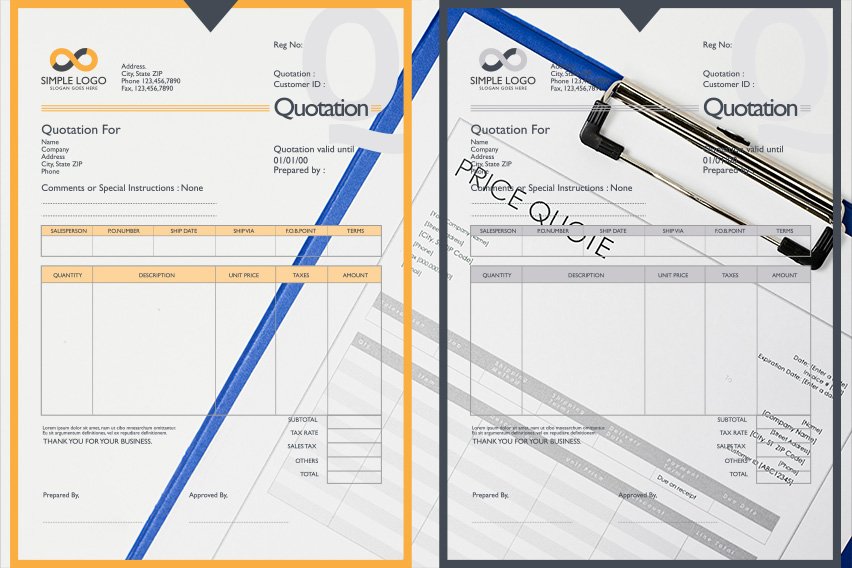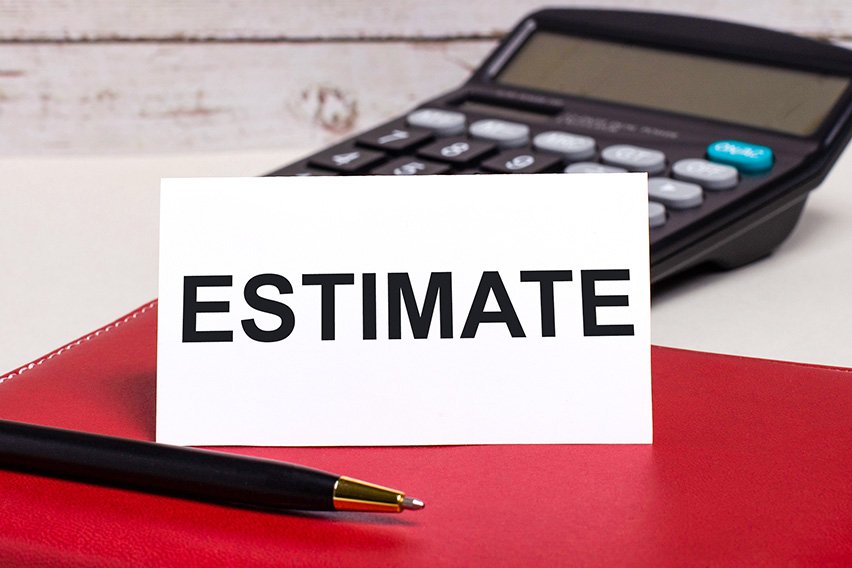How to Estimate Projects: Top 5 Project Estimation Techniques for Small Businesses

Learning how to estimate projects involves knowing all the project cost estimation techniques and mastering the ones that best suit your small business. The project estimation process can be hard, especially if there’s not a lot of information available about a job.
But not learning to estimate correctly can blow your project budget and extend your timelines, frustrating you, your client, your team and any subcontractors.
Learning to estimate correctly sets the stage for a thriving business, according to Liquid Planner. Correct estimating gets you off to a good start and helps with project planning.
In this article, we’ll cover the most common and effective project management estimation techniques. Not sure how to prepare an estimate? This article has estimate templates and free construction estimate tools. You can also easily prepare your estimates online using FreshBooks estimating software.
In this article, we’ll cover:
- Top-Down Estimation
- Bottom-Up Estimation
- Analogous Estimation
- Parametric Estimation
- Three Point Estimation
1. Top-Down Estimation
This estimation technique involves setting a project budget and then dividing it up between different stages or tasks. Then you can guess whether there’s enough money allocated to each section and make adjustments as needed, according to The Digital Project Manager.
Businesses use this technique early in a project to see if the amount a client’s willing to pay is not only enough to cover costs but make a profit.
Advantages: Quick and easy. It’s a simple technique that will help you let a client know whether their budget will work for the project and what tasks can reasonably be completed with said budget. Good for single-owner businesses or small teams without many resources.
Disadvantages: Not accurate at all. You’re allocating the budget based on guesses. This estimating method also doesn’t account for possible changes in the project and its budget.

2. Bottom-Up Estimation
Bottom-up estimation is similar to top-down estimation in that you’re estimating a project according to stages or tasks.
But in this technique, you’re doing so with a lot more information on hand. You also have a full understanding of the requirements of the job.
Each section is estimated individually and then summed up to determine the total cost of the project. Bottom-up estimation is done late in the estimation process when the scope and components of a project are clear.
Advantages: The most accurate project cost estimation technique. And because it’s very detailed, you can easily check project costs against the estimate later on to make sure you’re on budget. You can also check against estimated timelines to ensure everything’s on track. A bottom-up estimate will help you manage your project when it’s in progress and complete it on time and on budget.
Disadvantages: Time intensive to prepare for staff and requires plenty of resources like gas to do site visits. You also need plenty of information about every stage and task in the project, which can be difficult to obtain. Costs can also be overestimated using this technique because it’s so detailed. Use analogous estimation (see below) to check your work for accuracy.
3. Analogous Estimation
This is a type of estimation where you base a new project budget off an old one. If you did a roofing job on a similar house three months ago and it cost $2000, you could reasonably assume your new roofing project would cost about the same.
It’s a ballpark type of estimating similar to the top-down technique.
This estimation technique only works if your previous projects are similar to your new one or the estimate won’t be accurate.
Advantages: Quick and simple to do and doesn’t require a ton of information about the current project. A great technique when all you need is a rough number.
Disadvantages: Not very accurate. Two projects might be similar but never alike, making it difficult to transpose one set of figures to another. Plus, the data from your old project needs to be accurate, which isn’t always the case.
4. Parametric Estimation
This is a slightly more accurate technique than top down or analogous estimation if you want a ballpark project cost. Parametric estimation is a project management estimation technique that bases a new project on a previous project, but adjusts for variables.
- For example, you wrote a 500 word blog post on accounting in the past for $100. Your new project involves writing a 1500 word blog post on accounting. 1500 is three times more words. So $100 x 3 = $300 total project cost.
Advantages: It’s the most accurate ballparking technique as it accounts for different requirements in a new project.
Disadvantages: It may be hard to find data to manipulate for digital projects. For example, one website project has 10 pages, another similar one has 20. Do you simply double the project cost? Will this be accurate?
5. Three Point Estimation
Three point estimation moves away from ballpark estimating techniques and into establishing more accurate, realistic costs. This method involves taking an average of three scenarios: best case scenario, worst case scenario and most likely scenario.
Here’s a simple formula:
(Best + Worst + Most Likely Estimates) / 3 = Expected Estimate
- For example, a lawyer believes a project will cost $1000 in the best case scenario and $1500 in the worst case scenario, with $1200 being the most likely figure.
- ($1000 + $1500 + $1200) / 3 = $1233.33 expected estimate
You can adjust the formula to weight different scenarios, as well.
- For example, the lawyer actually believes that the project is more likely to end up with the worst case scenario. She wants to give more weight to the worst case scenario estimate in the formula.
- Assign weights and multiply by estimate: $1000(1) + $1500(2) + $1200(1) = 5200
- Add together your weights: 1 + 2 + 1 = 4
- Divide first number by second: 5200 / 4 = $1300 expected estimate
Advantages: Delivers a more accurate estimate as it allows for unexpected problems in the project, which reduces your risk as a small company.
Disadvantages: Takes more time and is a more complicated technique to learn.

People also ask:
How Do You Estimate Costs for a Project?
You can estimate costs for a project by hand or by typing something up quickly. But to help with accuracy, especially in more complex projects, you’ll want to use a project estimation tool or template. Below are some examples:
- Excel, Word or Google Sheets. Change “quote” to “estimate” in the below templates:
- Price Quote Template (Excel)
- Service Quote Template (Word)
- Price Quote Template (Google Docs)
- Cloud Accounting Software. FreshBooks has an estimates function that helps you quickly plug your costs into a professional template that you can email to your client on the spot.
- Simple Estimate. Estimate costs without spreadsheets, ideal for the beginner.
- Web Development Project Estimator. Made just for web developers.
Estimation tools specific to construction:
- Construction Estimate Template from Microsoft Office (it says proposal, but it’s essentially a detailed estimate)
- Easy-Pro Builders Estimator. It has different worksheets for different trades and automatically calculates labor and materials costs and taxes (by country). It’s a great option for a small company.
- Building Calculator. This free app works on all devices and assists in calculating the amount of materials you’ll need for a project.
- All-In-One Calculator Free. This free Android app helps you do construction-related calculations.
Also Read: Construction Cost Estimating Software
How Do You Estimate Time for a Project?
Here are six techniques to estimate time for a project:
- Break down the project into activities and then further into smaller tasks, then estimate each task.
- Take a look at similar projects you’ve done in the past and how many hours they took. Then calculate the average. For example, project one took 5 hours and project two took 10 hours. (5+10) / 2 = 7.5 average hours
- Take past project timelines and adjust them for differences in the new project.
- Use your judgement. Maybe you have significant experience in your field. Or you could consider hiring a specialist to do the estimation for you, says the Houston Chronicle.
- Add labor time plus time required to get materials for the project, a useful method for general contractors and tradespeople.
- Estimate based on unit. This could be words per blog post or pages per website or per product produced. Estimate how many hours it takes to produce each unit and multiply by how many units are required for the project.
Free project duration calculators:
- Duration Estimation Template (for Word)
- Easy Redmine (free trial)
- Project.net (free trial, an open-source version of Microsoft Project)
- Ecosys Projects (not free, for advanced estimating)
RELATED ARTICLES

 Is A Quote A Contract: A Primer for Small Businesses
Is A Quote A Contract: A Primer for Small Businesses 5 Reasons Why It’s Important for Small Businesses to Use Estimates
5 Reasons Why It’s Important for Small Businesses to Use Estimates The 4 Key Types of Estimates: A Guide for Trades and Home Services
The 4 Key Types of Estimates: A Guide for Trades and Home Services Free Quote Templates for Google Docs, Excel & Word
Free Quote Templates for Google Docs, Excel & Word What's a Job Estimate? A Primer for Small Businesses
What's a Job Estimate? A Primer for Small Businesses How to Estimate Remodeling Jobs: A Pricing Guide
How to Estimate Remodeling Jobs: A Pricing Guide